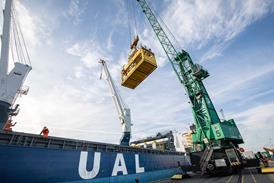After experiencing one of its most challenging years to date amid the Covid-19 pandemic, the global freight forwarding market bounced back strongly and grew by 11.2 percent in real terms in 2021, according to Transport Intelligence (Ti).
Last year, the freight forwarding market grew at its fastest rate in a decade, bringing the market value to USD279.6 billion.
According to UNCTAD, global trade totalled around USD28.5 trillion, an increase of almost 13 percent relative to pre-pandemic levels. As well as the phasing out of pandemic-related restrictions on economic activity, government support schemes and economic stimulus packages introduced in many countries remained, keeping demand for goods at elevated levels. E-commerce industry growth and the rise of free trade agreements have also been contributors to the growth of the global digital freight forwarding market.
Growth was led by airfreight forwarding. With a real growth rate of 14.9 percent, the segment reached a value of USD125.9 billion. Strong demand for goods was compounded by supply chain bottlenecks in the sea and land transport segments.
In the ocean freight forwarding market, growth opportunities were lost due to a shortage of carrier capacity and port congestion. These sector-specific supply factors held back growth in the sea freight forwarding market which grew by 6.6 percent in 2021 in real terms, to reach a value of USD153.7 billion. Demand for sea freight was considerably higher than available capacity, pushing prices up around 69.8 percent.
Looking ahead, Ti said that growth drivers would gradually abate, and global trade growth is expected to moderate in 2022. As a result of this continued but weakened global economic recovery, the global forwarding market is expected to grow at a slower pace of 5.7 percent in 2022 and reach a market value of USD295.4 billion.
2026 forecasts are more pessimistic than previously as inflation challenges intensify, the war in Ukraine threatens global energy and food supplies and consumer spending slows. As a result, the global freight forwarding market is expected to grow at a 3.7 percent compound average growth rates (CAGR) over the five years to 2026.
The air forwarding market is forecasted to exhibit slightly faster growth, expanding at a 4 percent CAGR over the period, while the sea forwarding market is expected to grow slightly less quickly at 3.6 percent CAGR over the period.
Ti’s full brief can be seen here.
















